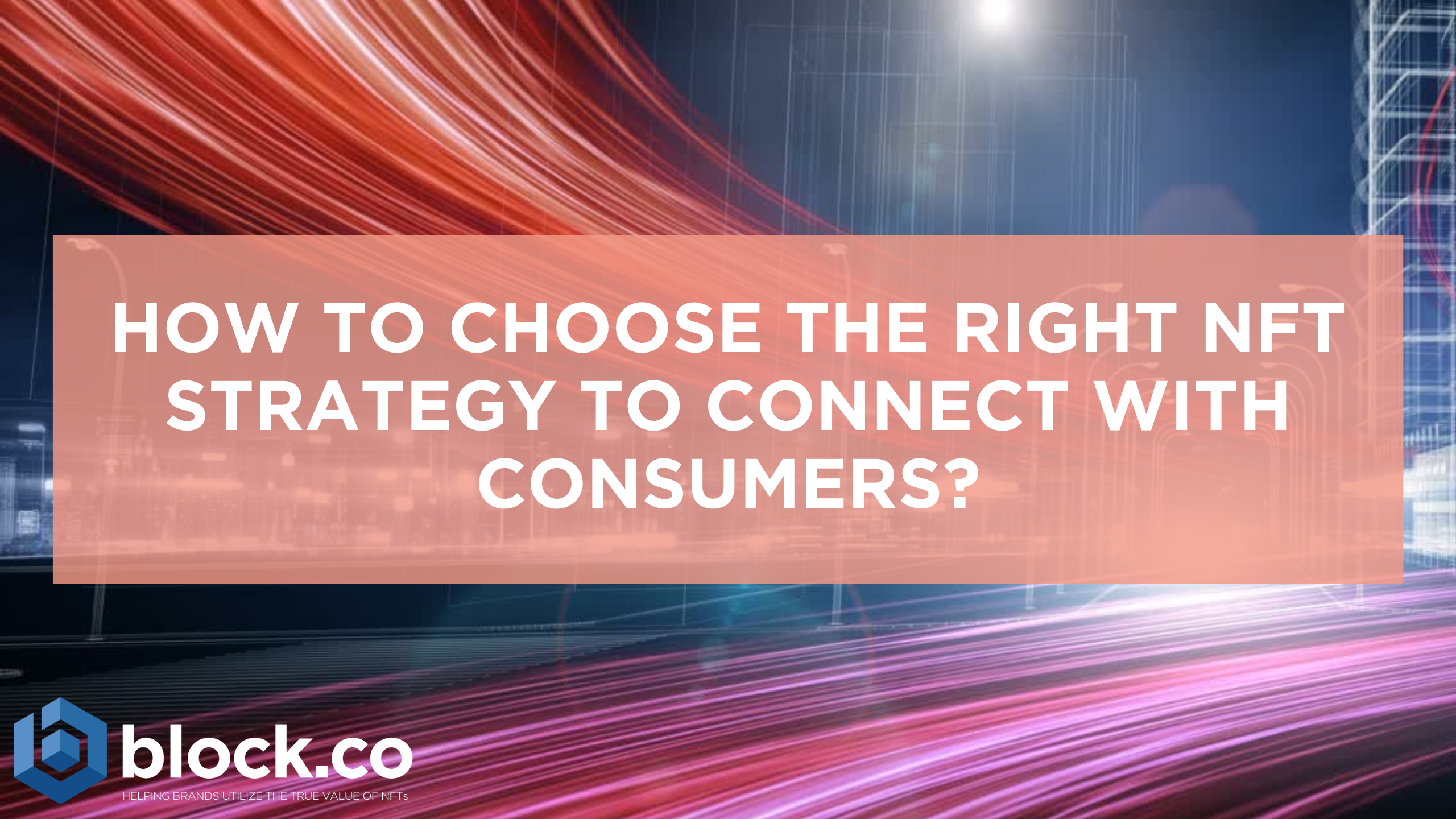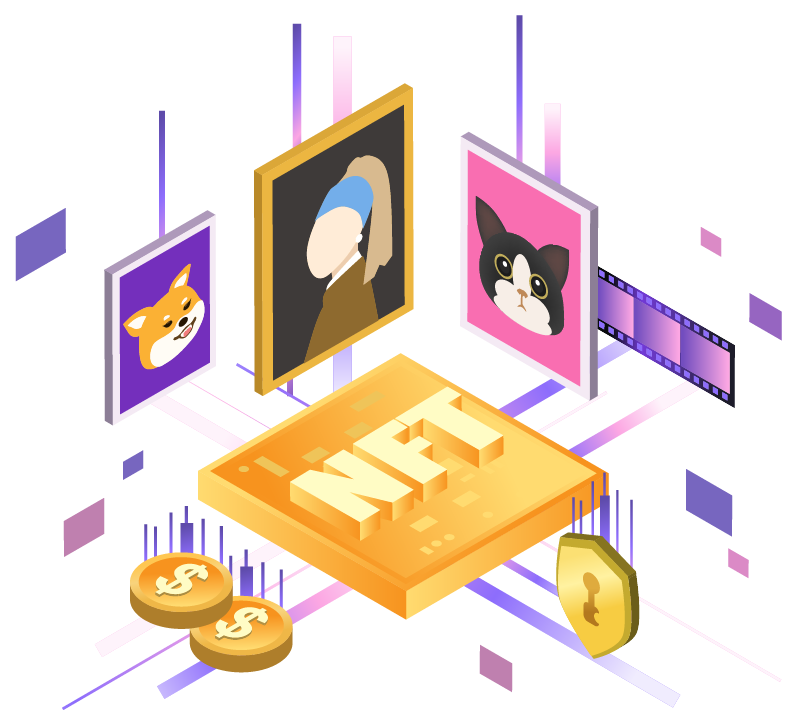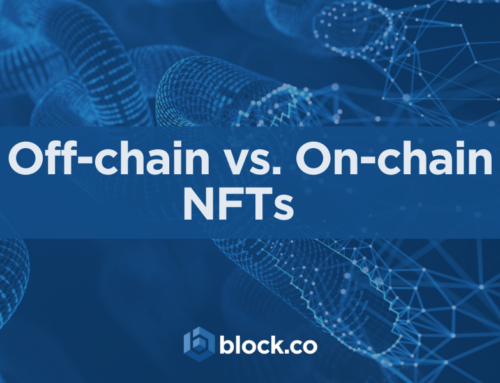NFT Utility Strategies for Brands

Written by George Agathangelou
NFTs or Non-Fungible Tokens are increasingly used by brands to develop engagement strategies with their communities. Despite the first rise and fall of NFTs after the 2021 hype, brands are starting to realize that selling NFTs is not the best way to go about it, and that instead, utility is the most crucial element for NFTs, to keep their value IRL. In our Ultimate NFT Guide, we discussed the DSM Framework (Digitize, Strategize, Mint) and how community engagement is the most effective strategy. In this article, we will explore the various strategies that may be employed within the Web3 realm and the metaverse for this kind of engagement.
The first wave of NFTs was an avalanche of useless tokens being sold without any specific use case or practical application, and mainly as collectible items with a speculative future price expectation. Today’s market has matured (a bit…), and consumers are expecting a neatly defined value exchange for the holder of NFT. But what are the best ways for marketing managers to achieve their marketing goals and strengthen their relationships with their customer base? This technology has far-reached implications and potential benefits other than just the get-rich-flipping-NFTs-scheme seen in 2021, with real use cases in commerce, customer relations, identity, and more.
Despite the growing number of Decentralized marketplaces like OpenSea, Rarible, SuperRare, tofuNFT and others, we believe that utility NFTs will be bought and traded on platforms that were specifically designed for the value that the specific NFT provides. Ticket NFTs will be bought directly from the event vendors. Sports team membership NFTs will be bought directly from the sports team. Fashion brand’s NFTs will be bought directly from online clothing shops and will entail the proof of authenticity for the garments. Art NFTs will be bought directly from art galleries found in the metaverse. Eventually, NFTs will unlock their full potential and act as a vehicle for the opportunities and solutions they provide.
Our platform enables brands to easily mint and NFTs and then distribute benefits in real life to their community with the NFT acting as the vehicle for this. With payments made in fiat currency and gasless claims to distribute NFTs via email, SMS, QR codes or direct airdrops, we bridge the gap for the uninitiated NFT users, without any knowledge of cryptocurrency and blockchain technology.
There is a catch, however, to deploy a successful NFT campaign for brands, and it all starts with good planning and a strategy behind the NFT mint. So, let us review some of the main NFT utility strategies that marketing agencies can use depending on what the NFT utility will be.
NFTs Utility for ticketing
NFTs are the new method for ticketing. They serve as a unique identifier supplying access to any venue or event, whether it is a music festival or sports event. Gary Vaynerchuk’s 2022 VeeCon conference could only be attended by holders of such NFTs. As said on its website: “By owning a VeeFriends Series 1 token, you get three VeeCon Ticket NFTs airdropped for free, one per year: 2022, 2023, 2024.” Ticketing fraud may be ended this way, as event organizers can check the NFT being held in the wallet of the attendees and may also verify that this specific token was indeed sent to the digital identity or the email address, prior to access being granted to the event.
This could also be applied to virtual events in the metaverse. An event attendee would simply interact with a dapp, by connecting its wallet and signing a message. The dapp would verify that the wallet indeed holds the specific NFT related to an online event and would grant access automatically. Moreover, the dapp could grant other benefits associated with the NFT and the online event, such as exclusive content applicable only to event attendees. The plan would be to interact with the community by supplying utility to the NFT while delivering digital memorabilia that could also be kept in their wallet and showed off as social proof of attendance to this event online.
NFTs Utility for collectibles
As the number of NFT marketplaces number increases, so do the various NFT collectible collection numbers, and we could expect that these are not going away any time soon. These collectible NFTs also may supply utility in various forms, either in charity fundraising or simply as an awareness medium for brands and their campaigns.

NFTs Utility for proof of ownership
Having an NFT as proof of ownership for an item other than a collectible may be applied in the digital realm or in real life (IRL). For example, NFTs may act as proof of ownership for in-game items, virtual land plots and may signify status for their proud owners (I.e., CryptoPunks and BAYC NFT holders). Within this scope, the utility is tied to cultural trends and what is considered as a status symbol. However, this strategy may be limited in scope as it demands an audience that is aware of the developments in the industry and are quick adopters.
Moreover, NFTs are slowly appearing as vital tools for representing ownership of physical items on top of blockchain networks. As a result, NFTs can serve as an ideal vehicle to enable the sale and purchase of real estate properties. For example, a real estate development firm, Prometheus, completed the sale of two luxury homes in Portugal through cryptocurrency. In addition, the firm also ensured the availability of ownership through NFTs.
Branded NFTs Utility
The recent digital transformation wave in all industries is shaping the way brands and consumers will interact in the future. Brands will eventually learn to use these new technologies, just like they adapted to the internet era over the last 2 decades. They will use NFTs to reach subsets of their communities and use them to engage with certain audiences by applying utilities such as memberships and brand loyalty rewards. Brands will be able to get more personalized in their offering and engage with their audiences making them feel more connected. For example, Adidas is entering the metaverse with their line of NFTs titled “Into the Metaverse,” providing customers with both virtual and physical Adidas tracksuits, hoodies, and signature beanies. These items would also be available to them if they were to choose to create their own avatar inside the metaverse.

Using NFTs as a tool to generate enthusiasm for signature products while also exploring alternative revenue sources seems to be a developing trend. Brands can be more creative in their offering and customize the offering depending on their customer segmentation. If a specific segment favors one product over another, then the branded NFTs may be delivered based on those preferences, further segmenting the communities with custom-designed content.
In conclusion, different strategies or even a combination of these utility strategies may be employed, planned at the same time or adapted to the current market needs. The technology is flexible and may accommodate variations and unlimited creativity. Finding the right partner that understands the opportunities and risks is imperative for the success of your campaigns.
If your brand is ready to take the step into web 3.0 and NFT marketing, to optimize engagement with your audience in innovative ways, then click the button below to get your Free Trial, a limited number of Free NFTs, and a Free Consultation call from our team!
To get more information about block.co’s services, please contact block.co directly or email at enquiries@block.co.
Tel +357 70007828
We regularly post educational materials on our social media, follow us to stay up to date about the latest blockchain and NFT news.







